| Notes: Birkenhead Woodside Station opened on 31.3.1878 as a replacement for an earlier terminus at Monks Ferry opened on 23.10.1844. The station was located right next to the Ferry Terminal for Liverpool so in effect it served the city even though it was located in Birkenhead. It was built further inland than originally conceived, in order to avoid demolition of the Mersey |
 |
ferries workshop, situated on the bank of the river. In order to join up with the existing track of the Chester and Birkenhead Railway, a half mile-long tunnel from Woodside to a point alongside the existing Monks Ferry tunnel entrance, near Grange Lane, was constructed using cut-and-cover.
The station was a grandiose building, with two semi cylindrical roofs covering much of the platforms. However, given the size of the station, it only had five short (but wide) platforms, as much of the space was taken up by middle tracks and a roadway.
 |
The station building was known to local rail users as "the wrong way round", because for the majority of the station's life, its original rear entrance was used as the main booking hall, whereas Woodside's 'front' entrance was mainly used for handling parcels. This entrance, covered in a porte-cochere to allow travelling gentry to avoid inclement weather, faced the |
graving dock on the south side of the station. It had been intended that passengers disembarking from the nearby ferry terminal of the same name would use this entrance. Unfortunately, the ferry companies were slow at co-operating and when the tram terminus opened in front of the ferry terminal in the early 1900s, the decision was made to keep the small 'back' entrance a permanent fixture. This was very unfortunate, as passengers arriving at the station never got to see the huge sandstone fireplaces, decorative brick work and massive timber roof trusses holding up the roof of the intended booking hall.
| From early days the GWR operated express trains to London Paddington and these continued right up to the closure of the station. Other services went to Chester, North Wales, West Kirby and Warrington. Routes further afield included Great Western Railway services to Chester General, Wolverhampton Low Level, Birmingham Snow Hill, Shrewsbury General and |
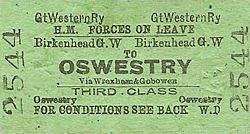 |
London Paddington.. There was even a service that went to Liverpool Lime Street only a couple of miles away across the river but nearly 40 miles by rail.
The station was very busy right up to nationalisation. However, as with many other stations and rail routes in the UK Dr Richard Beeching, found the need for the terminus superfluous, as most of the routes served could also be taken from Liverpool Lime Street station, on the other side of the River Mersey.
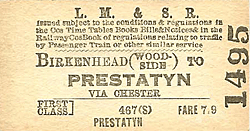 |
By early 1967, there were still six through trains on weekdays between Birkenhead Woodside and London Paddington. In March of that year, the route was effectively curtailed at Wolverhampton, as a result of the introduction of electric trains on the West Coast Main Line. At the same time, the last steam service from the station took place, in the withdrawal of |
through services to Birmingham.
Only the hourly diesel train service to Chester and trains to Helsby remained to use the station. With the curtailment of these at Rock Ferry, the station closed to passengers on 5 November 1967 and was demolished within a couple of years.
| Birkenhead Woodside was a typical example of a busy station axed because it served destinations that Liverpool Lime Street also served. Today most of the lines that led up to Woodside are as busy as ever but they are connected into the former Mersey Railway as part of the Merseyrail network. Chester can still be reached from Woodside as Hamilton Square |
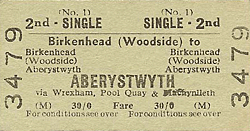 |
underground station is situated just across the square.
Today, the only evidence of its existence is part of the station wall, a road bridge and the tunnel, which lay at the station throat. The gates of the station were reused at a house in Gayton. The rest of the land is now used as a bus depot.
Tickets from Michael Stewart, Additional source: Wikipedia
To see other closed stations on the Birkenhead Woodside to Chester line click on the station name:Birkenhead Monks Ferry, Birkenhead Town, Tranmere,
Rock Lane, Ledsham, Mollington & Upton-by-Chester |

woodside_old10.jpg)
woodside_old12.jpg)
woodside_old14.jpg)
old7.jpg)
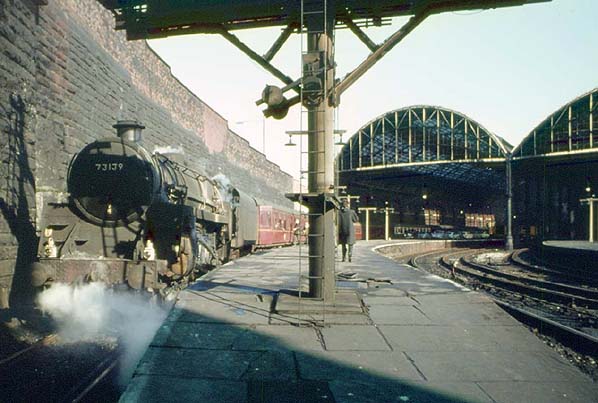
.jpg)
.jpg)
woodside12.jpg)
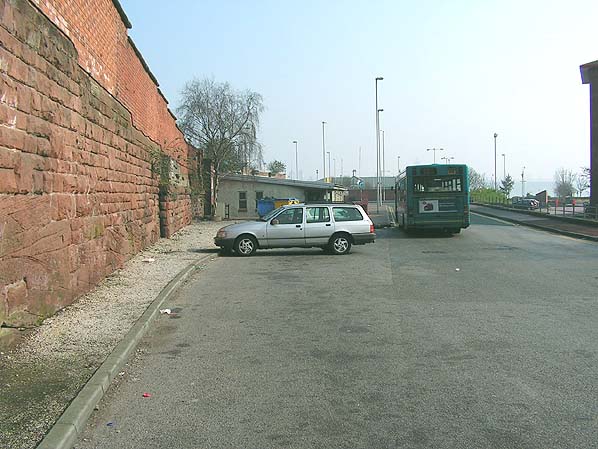






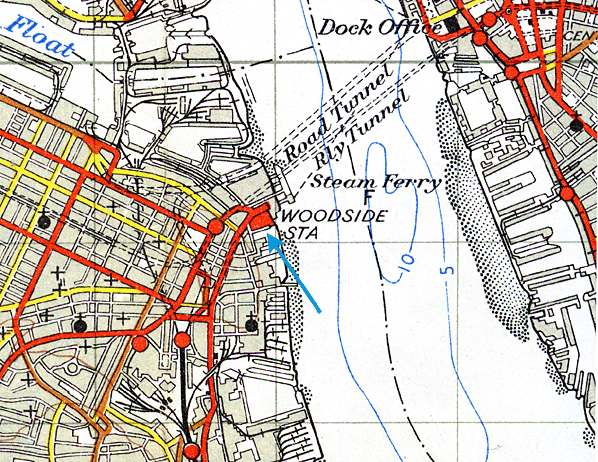
woodside_old_thumb11.jpg)
woodside_old_thumb9.jpg)


woodside_old_thumb13.jpg)
woodside_old_thumb15.jpg)


woodside_old_thumb8.jpg)










 Home Page
Home Page